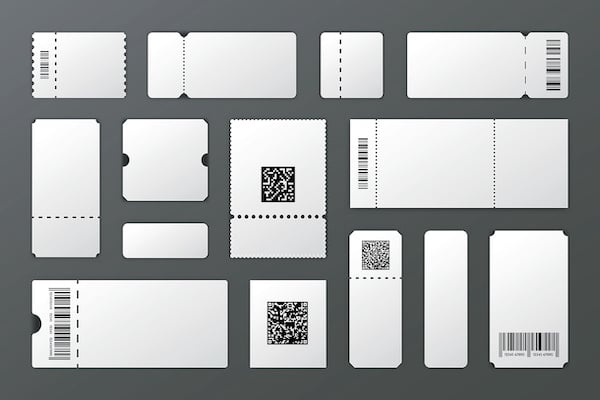State lotteries have long used sales figures to report out data to regulators, citizens, and...
A New Standard for Mobile Playslips
There are more than twenty states with digital playslips available in their mobile apps. This feature allows players to ditch the paper and pencil at retail and conveniently make wager selections, save favorites, and render barcodes for scanning to easily print their tickets. One jurisdiction, Oklahoma Lottery, has even taken the full step of eliminating all future production of paper playslips in favor of steering players to a digital version.
While we are only scratching the surface today, the potential for mobile playslips on the industry can be quite profound for players, retailers, lotteries and the gaming system suppliers. Some key opportunities that we believe this product can capture include the following:
- Lowering the hurdles for new players to learn and adopt lottery games
- A faster and more accurate in-store experience for players and retailers
- Reduction of square footage space consumed by the lottery category in retailers
- Affordance for greater game innovation - beyond the limitations of the paper size
- Reducing the environmental impact and waste associated with paper playslips
- Capturing data insights on retail play to enhance marketing and promotions
Let's call what we see in the marketplace today across the twenty-plus states the "first-generation mobile playslip" of our industry. While it is able to accomplish the fundamental goal of producing a lottery ticket from a mobile barcode, it also has several inherent challenges that limit the effectiveness and adoption of this new medium.

Before we highlight these challenges, let's start by clarifying a few fundamental items. A barcode is merely a visual representation of a data string. That data string can be numeric, alphanumeric, binary or other formatting standards. Each barcode has a limitation on the amount of data that it can encode before it hits a ceiling and then requires a multitude of barcodes to represent a complete set of data.
Given the simple explanation above, it should be apparent that the more compact a data string can be encoded - the more information that can be packed into a single barcode scan. Herein lies one of the main challenges that exists in our first-generation mobile playslips across the industry today. The data encoding is not optimized for compactness and thus a player looking to create a variety of wagers may end up with a series of barcodes to swipe and scan.
If we hope for the digital playslips to outperform the paper slips, and the verbally relayed bets that a retailer can key in themselves on the terminal, we must strive for a barcode standard that prioritizes compactness. This means we need to win the battle on speed of transaction. In other words, the goal should be as few barcodes as necessary to produce a desired set of wagers.
A specific problem observed with first-generation mobile playslips is that there is very little support for combining multiple games into a single barcode. Tennessee Lottery was the only app, across the twenty-plus that we benchmarked, which supported a scenario such as a Powerball slip to be combined with a Mega Millions slip in a single barcode. In all other jurisdictions, a new game resulted in a separate barcode interaction to deal with.
Another gap we’ve seen is a lack of ability to embed a simple parameter to repeat the production of a wager any number of times. This common use case is often seen in stores today, where a player will ask for a paper slip to be run X number of times to produce separate tickets with an identical wager. Mobile playslips encoding, with an eye toward data compression, should include a standard quantity parameter for each unique wager.
Easy or quick pick selection is another gap in some instances. Some jurisdiction barcode models require the mobile playslip to randomize the numbers and insert the selections into the barcode string. This can result in massive bloat of the data string, attempting to insert upwards of 240 characters (e.g., 2 digits per number x 6 numbers x 20 lines) rather than less than 5 characters (e.g., quick pick flag with a 20 quantity of lines)
Lastly, a missed opportunity is the ability to insert tracking data into the barcode itself so that it can be logged on the gaming system. While an app may know the device identifier, or even the player's identity from registration, there is currently no way to embed a tracking parameter into the barcode itself. This would open up the door, across the industry, to allow for rich data insights and new opportunities for loyalty and promotions.
Summary and Takeaways
We believe in the potential for mobile playsilps to positively impact the industry but a barcode encoding standard, that prioritizes compactness and player-level tracking, is much needed to set the proper foundation. The following principles should be applied as we attempt to advance toward a second-generation mobile playslip standard:
- Minimize the number of player and retailer interactions required to produce a set of wagers
- Prioritize data compactness as a primary objective in barcode design
- Adopt a standard encoding type (e.g., alphanumeric) and structure across the industry
- Enable a paradigm to support a data tracking model that spans from app to gaming system
In order to support the industry, Gambyt will be publishing further recommendations regarding a second-generation mobile playslip and a forward-thinking third-generation mobile playslip as a continuation of this topic. To stay informed, be sure to join our Insights subscription to have new articles delivered to your inbox.
.png?width=50&name=go%20blue%20(6).png)



